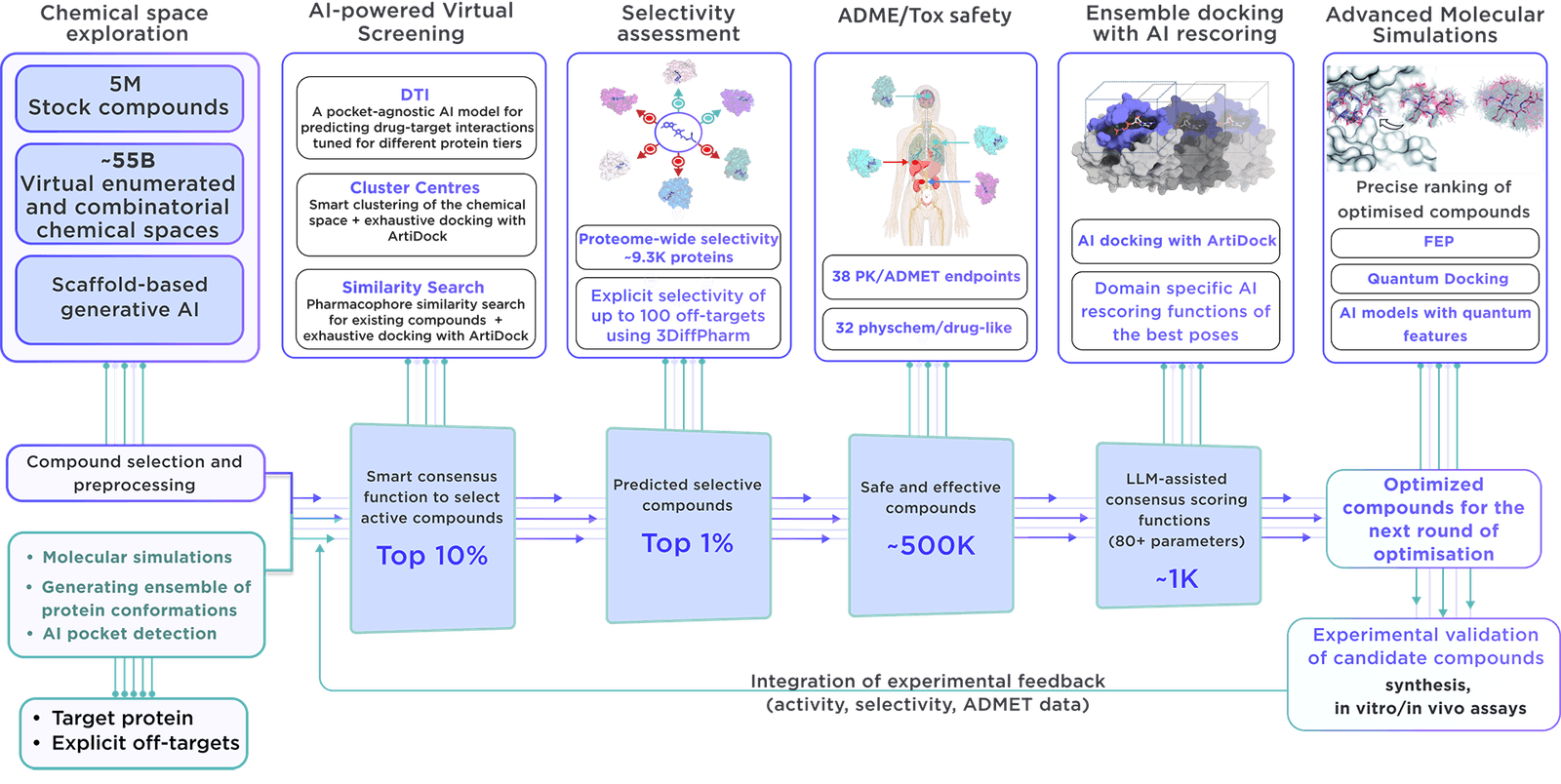Focused On-demand Libraries - Receptor.AI Collaboration
Explore the Potential with AI-Driven Innovation
This extensive focused library is tailor-made using the latest virtual screening and parameter assessment technology, operated by the Receptor.AI drug discovery platform. This technique is more effective than traditional methods, offering compounds with improved activity, selectivity, and safety.
From a virtual chemical space containing more than 60 billion molecules, we precisely choose certain compounds. Reaxense aids in their synthesis and provision.
In the library, a selection of top modulators is provided, each marked with 38 ADME-Tox and 32 parameters related to physicochemical properties and drug-likeness. Also, every compound comes with its best docking poses, affinity scores, and activity scores, providing a comprehensive overview.
Our high-tech, dedicated method is applied to construct targeted libraries for enzymes.
It includes comprehensive molecular simulations of the catalytic and allosteric binding pockets and the ensemble virtual screening accounting for their conformational mobility. In the case of designing modulators, the structural changes induced by reaction intermediates are taken into account to leverage activity and selectivity.
Our library is unique due to several crucial aspects:
- Receptor.AI compiles all relevant data on the target protein, such as past experimental results, literature findings, known ligands, and structural data, thereby enhancing the likelihood of focusing on the most significant compounds.
- By utilizing advanced molecular simulations, the platform is adept at locating potential binding sites, rendering the compounds in the focused library well-suited for unearthing allosteric inhibitors and binders for hidden pockets.
- The platform is supported by more than 50 highly specialized AI models, all of which have been rigorously tested and validated in diverse drug discovery and research programs. Its design emphasizes efficiency, reliability, and accuracy, crucial for producing focused libraries.
- Receptor.AI extends beyond just creating focused libraries; it offers a complete spectrum of services and solutions during the preclinical drug discovery phase, with a success-dependent pricing strategy that reduces risk and fosters shared success in the project.
Receptor.AI
Q96BW5
UPID:
PTER_HUMAN
ALTERNATIVE NAMES:
Parathion hydrolase-related protein
ALTERNATIVE UPACC:
Q96BW5; B0YJ77; B3KTF5; D3DRU0; Q9BY46

